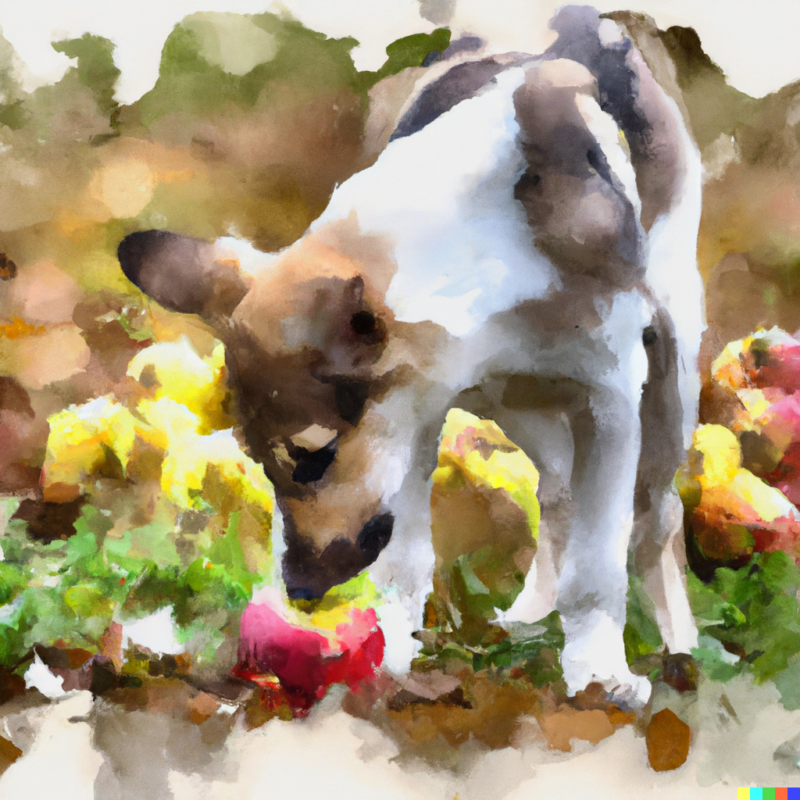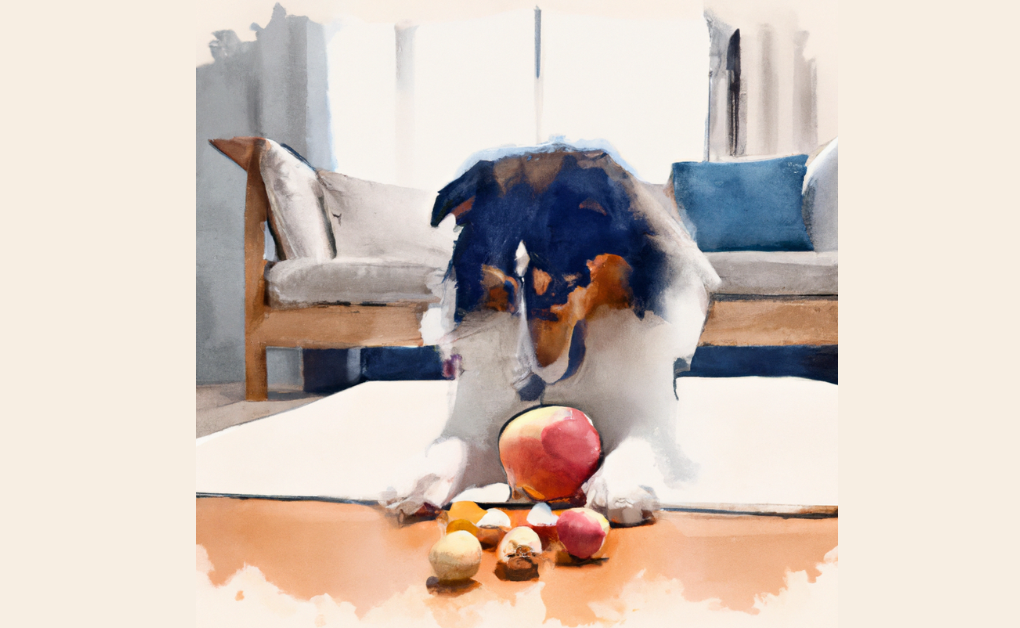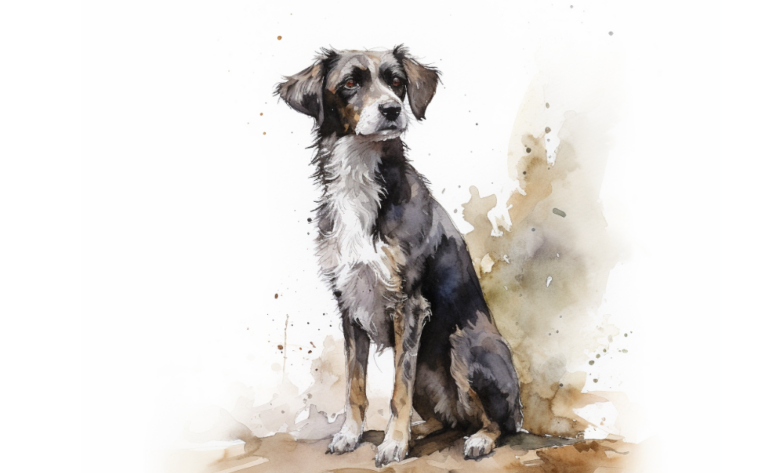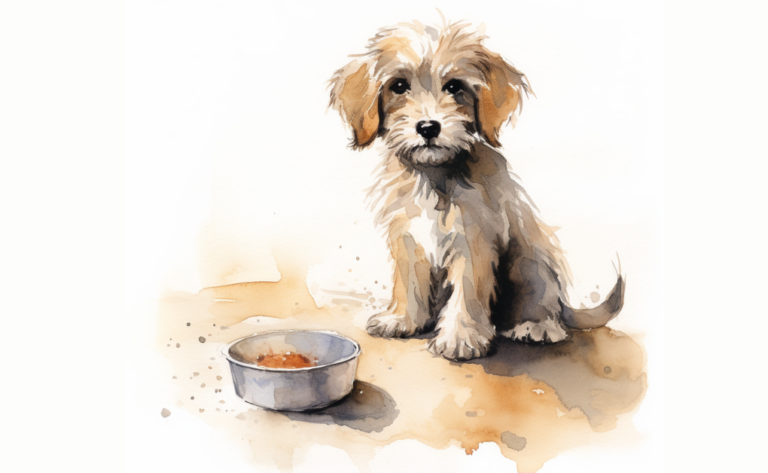No, Apple Cores and Seeds Aren’t Poisonous to Pets
Introduction
As Charlie, a playful Golden Retriever, trotted into the living room, his owner, Lisa, noticed the remnants of an apple core in his mouth. Panic set in as she recalled a friend mentioning the potential danger of apple cores and seeds to pets. Scrambling for her phone, she frantically researched the subject and reached out to her veterinarian.
As the saying goes, An apple a day keeps the doctor away. But are they safe for dogs to eat? Apple cores and seeds are not toxic to our pets. They’re pretty nutritious. However, feeding them too often may cause diarrhea. So keep this in mind when planning your following pet food recipe.
Avoid overfeeding your dog or cat if you plan to give him some fresh fruit. Apples contain pectin, which causes stomach upset in dogs who overeat. Also, apples should never be fed raw because they contain cyanide.
Health Benefits of Apples on Pets
Apples offer many health advantages to pets, especially dogs, when adequately prepared and given in moderation. Here are a few of these benefits:
- Packed with Nutrients: Apples are a good source of essential nutrients that are beneficial for pets. They provide a healthy dose of vitamins A and C, enhancing your pet’s immune system and promoting healthy skin. Additionally, apples are rich in dietary fiber, which facilitates good digestion.
- Promotes Dental Health: Chewing apple slices can aid in cleaning your dog’s teeth and combat bad breath.
- Aids Hydration: Apples are high in water content, which can provide additional hydration, especially in hot weather conditions.
- Low in Fat and Calories: Apples are low in fat and calories, making them an excellent choice as a healthy treat for pets, particularly those who need to maintain optimal weight.
- Antioxidant Properties: Apples contain antioxidants that help ward off diseases and boost overall health. This is one of the many benefits of apples for dogs.
Removing the apple’s core and seeds before feeding it to your pets is crucial, as these parts can pose potential risks. Apple seeds contain a trace amount of cyanide, and while a handful of seeds are unlikely to cause problems, it’s safer to avoid them. The core could also present a choking threat or result in intestinal obstruction. Always slowly introduce new food like apples into your dog’s diet to watch for adverse reactions. And, as with any significant changes to your pet’s diet or dog food, it’s wise to consult with your veterinarian first.
Cyanide Poisoning in Pets

Apple seeds hold a compound known as amygdalin, a cyanogenic glycoside. This indicates that it can produce cyanide, a poisonous substance when it interacts with digestive enzymes in the stomach.
When a dog consumes apple seeds, the dog’s body breaks down the amygdalin in the digestive tract, releasing cyanide that can be absorbed into the bloodstream. Cyanide interferes with cellular respiration, the process through which cells utilize oxygen to generate energy. Specifically, cyanide tightly binds to an enzyme in the mitochondria called cytochrome c oxidase, disrupting the final step of the electron transport chain, an essential part of cellular respiration. As a result, the cells can’t produce the necessary energy to function correctly, leading to various health problems and, in extreme cases, death.
However, as a dog owner, it’s crucial to understand that a dog must ingest many apple seeds – and chew them thoroughly – for the cyanide to pose a significant risk. This is because the seed’s hard outer shell can often prevent the release and absorption of amygdalin. But even if your dog seems fine, it’s best to remove apple seeds before feeding it apple slices as a safety measure. Likewise, apple cores are toxic and can pose a choking hazard or potentially cause an intestinal blockage, so it’s best to avoid giving your dog apple cores.
It’s always essential to be aware of the portions and preparation of apples or other human foods you give to your pets. Even a single apple seed can upset a small dog’s stomach. If you suspect that your dog’s eaten an apple core or has ingested harmful apple seeds from an apple tree, immediate veterinary care is essential. Symptoms of cyanide poisoning can include dilated pupils, panting, shock, and in severe cases, death. While apple seeds contain a small amount of cyanide, and one apple seed might not be bad for dogs, a whole apple with seeds can be toxic.
How Many Apples Can You Feed Your Pet?
The quantity of apples you can give your dog depends on their size and overall health. However, treats and snacks, including fruits like apples, should be at most 10% of your pet’s daily caloric intake.
A few apple slices cut into small pieces make a good snack for a small dog or cat. For a larger dog, half an apple may be suitable. Always introduce new foods gradually, employing a slow approach to eating and watching for signs of digestive upset or allergic reactions.
Dog owners must remove the apple seeds and core before feeding them to their pets. The seeds contain a small amount of cyanide, and the hard apple core can be a choking hazard or potentially cause intestinal blockage if dogs manage to eat them.
While rich in fiber, apples can be a healthy treat for dogs and cats; they should not replace a balanced diet tailored for your pet. If you need more clarification about how much apple or other fruits you can give your dog, it’s always advisable to consult with your vet.
Remember, certain pets, such as those with diabetes or other health conditions, might need to limit their fruit intake due to the sugar content. Dogs aren’t like humans, and their dietary needs can vary significantly. Always discuss dietary alterations or concerns with your vet to ensure your dog’s health and safety.
How Many Apple Seeds Are Toxic To Pets?
Apple seeds, or apple pips as they’re sometimes known, contain a form of cyanide, a toxic substance. However, the cyanide levels in apple seeds are usually minuscule, and seeds aren’t typically ingested in quantities significant enough to cause harm. In addition, the body can detoxify and eliminate small doses of cyanide.
That said, if a dog, cat, or other pet consumes a large number of apple seeds—for instance, from several apples or even apple chips—all at once, it could result in cyanide poisoning. Symptoms of this kind of poisoning include dilated pupils, difficulty breathing, panting, shock, and death in the most severe cases.
However, the seed count that could cause harm varies considerably, depending on the pet’s size, overall health, and other factors. For instance, a small pet might start showing symptoms after ingesting around 200 apple seeds, while a larger one might tolerate more. On average, an apple might contain about eight seeds, but this can vary. As a rule of thumb, it’s best to avoid feeding apple seeds to pets altogether.
Also, bear in mind that the hard coating of the apple seeds means they can pass through the digestive tract without releasing their cyanide content, provided they are not crushed or chewed. So, even if your pet accidentally ingests an apple seed, it might not lead to any complications.
However, to err on the side of caution, always remove the apple seeds and core before feeding apples, including the seeds, to your pets.
Can Dogs Eat Apple Cores?
While the flesh of an apple is healthy for dogs, the apple core is not recommended for them. This is because the core of an apple contains small amounts of cyanide within the seeds, which is toxic to dogs if consumed in large quantities. However, the primary concern with apple cores is their potential choking hazard and gastrointestinal obstruction.
The size and hardness of an apple core can make it a choking hazard for dogs, especially smaller breeds. If a dog swallows the core whole or bites off large pieces, it could obstruct the dog’s intestines, leading to a severe medical emergency requiring surgery.
So, while dogs can safely enjoy the nutritional benefits of apples, core the apple and remove the seeds before feeding it to them, it’s also wise to cut the apple into manageable slices to reduce the risk of choking.
What if Your Dog Has Eaten an Apple Core?
Suppose your dog, regardless of whether it’s a healthy dog or one with existing conditions like liver disease, has ingested an apple core. Observing them closely for any signs of discomfort or distress is crucial in that case. The apple seeds within the core contain cyanide, but the small amount is typically insufficient to poison a dog unless they consume a considerable amount.
However, the apple core’s hard, indigestible nature poses a more significant concern as it could cause choking or gastrointestinal obstruction. Blockage symptoms can include vomiting, diarrhea, loss of appetite, lethargy, or obvious discomforts such as pacing or difficulty settling down.

If your dog shows any of these signs after eating an apple core or if you’re uncertain about their condition, it’s vital to contact your veterinarian immediately. The vet can offer advice tailored to your dog’s size, health status, and the amount of apple core consumed. For example, if your dog ate the apple core recently, inducing vomiting might be the vet’s recommendation. However, if some time has passed, diagnostic imaging might be suggested to check for a blockage in your pet’s digestive tract.
Bear in mind that preventive measures are always better than treatment. So, in the future, remove the core and seeds from any apple, be it a green apple or an organic apple, before giving them to your pet as part of your dog’s diet. Also, avoid feeding your dog apple pie or apples with added sugar or peanut butter, as these can harm your dog’s teeth and overall health. Remember, even a small amount of these can be harmful.
How to Recognize If Your Pet Has Been Poisoned
Identifying signs of cyanide poisoning in pets, such as dogs, is vital for timely intervention. Cyanide toxicity often presents with acute and severe symptoms since cyanide hampers the body’s ability to utilize oxygen at the cellular level. For example, suppose your pet has consumed a substantial quantity of cyanide sources, such as apple seeds, cherry pits, or even apple sauce that contains seeds. In that case, they might exhibit the following symptoms:
- Respiratory distress: Difficulty breathing, such as panting or gasping for breath, can be a clear sign of cyanide poisoning.
- Dilated pupils: If your pet’s pupils seem larger than usual, it can indicate a severe health issue.
- Unusual gum color: A struggling body trying to use oxygen can cause the gums to appear unusually red or pink.
- Excessive drooling: You may notice your pet salivating more than they typically would.
- Seizures: In severe instances, cyanide poisoning can trigger seizures or convulsions.
- Coma: In extreme cases, your pet may lose consciousness and lapse into a coma.
- Death: Cyanide poisoning can be fatal if it isn’t addressed promptly.
Dog owners must be cautious about what their pets ingest. For instance, dogs don’t typically chew apple cores or seeds, but if your dog could eat these, it could lead to poisoning. Therefore, immediate veterinary care is essential if you suspect your pet has been poisoned by cyanide. The vet may give an antidote to counteract the effects of cyanide, and supportive care, such as oxygen therapy, can help your pet recover. Remember, a dog would have to eat many seeds in one go to be severely affected, but it’s always better to be safe and prevent access to harmful substances found in apple cores or seeds.
Serving Your Pets Apples
Serving apples to your pets can be a healthy treat when done correctly. Here’s how to do it:
- Wash the apple thoroughly: Like with any fruit, you want to ensure the apple is clean and free from pesticides or dirt.
- Remove the core and seeds: Apple seeds contain cyanide, which can be toxic to pets if consumed in large quantities. Additionally, the core can be a choking hazard, especially for smaller pets. Therefore, always remove the seeds and core before giving apples to your pets.
- Slice the apple into manageable pieces: Depending on the size of your pet, you may need to cut the apple into smaller, bite-sized pieces. For larger dogs, bigger slices may be okay, but you’ll want to cut the apple into smaller chunks for smaller dogs or cats.
- Serve raw or cooked: You can serve the apple slices raw or cooked. If serving cooked, ensure they are cooled down before giving them to your pet. Avoid adding any seasonings or sugar.
- Moderation is key: While apples can be a healthy treat, they should not make up a large portion of your pet’s diet. Too much of any fruit can lead to gastrointestinal upset due to the high sugar content.
Remember, every pet is different, and not all pets will like or tolerate apples. Always introduce any new food slowly and watch for any signs of an adverse reaction. If your pet shows any signs of discomfort or illness after eating apples, contact your vet immediately.
Frequently Asked Questions
Disclaimer: The information provided on this veterinary website is intended for general educational purposes only and should not be considered as a substitute for professional veterinary advice, diagnosis, or treatment. Always consult a licensed veterinarian for any concerns or questions regarding the health and well-being of your pet. This website does not claim to cover every possible situation or provide exhaustive knowledge on the subjects presented. The owners and contributors of this website are not responsible for any harm or loss that may result from the use or misuse of the information provided herein.







